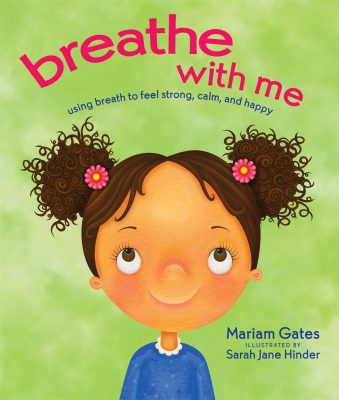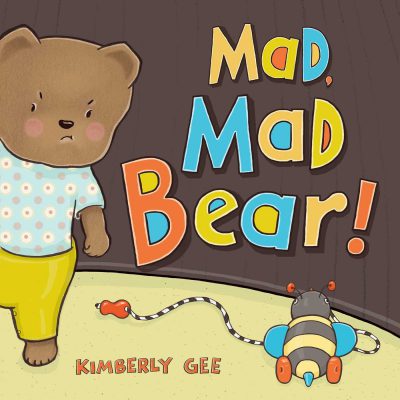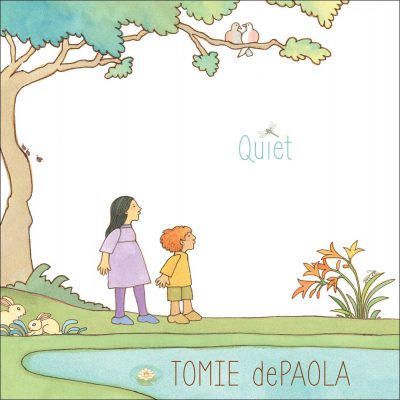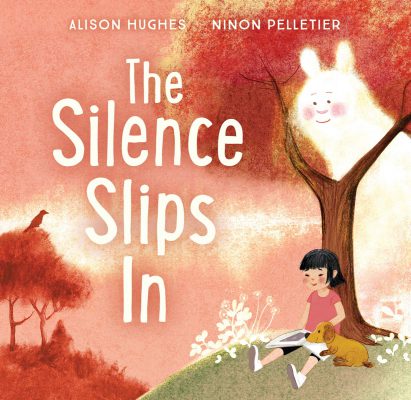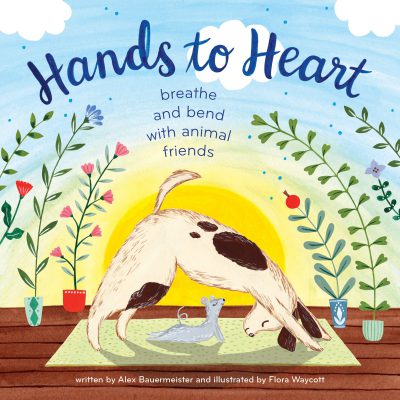Mindfulness picture books for your little ones (and you!)
Posted on January 15, 2020 at 6:00 am

By Melissa Rhoades
Definitions of mindfulness can sound mystifying and impossible to achieve. Take, for example, the Merriam-Webster Dictionary definition: “the practice of maintaining a nonjudgmental state of heightened or complete awareness of one’s thoughts, emotions, or experiences on a moment-to-moment basis.”
Luckily, there is a much less daunting definition. According to a 2017 Psychology Today article, the scientific definition of mindfulness is the “self-regulation of attention with an attitude of curiosity, openness, and acceptance.”
Not only does this sound more achievable, it also makes the goals clearer.
It’s important to note that both definitions focus on the active nature of mindfulness. The word practice reminds us that mindfulness is an action, not an outcome. Likewise, the term self-regulation emphasizes exertion, an exercise of control.
Many methods can be used to practice mindfulness, but the goal is always to deliberately shift focus outside your own mind.
One of the most common tactics is to focus on your breathing. This refocuses the mind and simultaneously benefits the body in additional ways, as your breath slows down and deepens.
But regardless of method, the tricky part of mindfulness is the brain developing lifelong, sticky habits: daydreaming, predicting the future, replaying past events, worrying, hoping, deploying emotional responses, etc. This means that shifting your focus requires a continual re-shifting as the mind continually falls back into its habits.
Because of this, it’s never too early to start teaching children mindfulness strategies. The earlier they learn to regulate their own attention, the earlier they will develop strong emotional management, good listening skills, and effective ways to stay focused.
While peppy, interactive books will always dominate my Storytime reading selections, I also like to incorporate picture books that focus on mindful breathing and silence. It can be difficult to get a roomful of squirmy toddlers and preschoolers to calm down—but it’s not impossible. The following books provide some of my favorite ways to get started.
Breathe With Me (2018), by Mariam Gates, isn’t found in the picture book section. This little gem is catalogued in children’s nonfiction. But don’t let that categorization fool you! Its short text and tightly rhymed phrases are surrounded by happy, colorful illustrations on each page. Gates introduces situations young children can easily relate to (feeling sleepy, sad, angry, etc.) and offers a breathing technique for each one (rainbow breath, belly breath, counting breath, and so on). The techniques make this book wonderfully interactive. I love doing the breathing exercises with groups of children. They’re always a little calmer afterwards. I’ve even had preschool teachers ask me for the title and author on the spot. Illustrator Sarah Jane Hinder’s sweet images depict a diverse population of cherubic children, making the book even more delightful.
Mad, Mad Bear (2018), by Kimberly Gee, doesn’t sound like it belongs on a list of mindful reads. Yet here it is, and for good reason. Gee masterfully takes readers through Bear’s morning. He’s the first one to have to leave the park for a nap, and things go downhill from there. It’s obvious from the looks on their faces how thoroughly Storytime kids empathize with Bear’s plight. This is why it’s so powerful when Bear stops his tantrum and “… takes a breath. And another breath. And another breath.” And that’s when Bear lets go and feels calm. The book explores anger management in a way little ones immediately relate to. The simplicity and bold colors of the illustrations, in addition to the storyline and minimal text, make this perfect for toddlers.
Quiet (2018), by Tomie DePaola, follows a grandfather and his grandchildren as they take a walk through the park and then sit down to notice the world around them. With just one to two short sentences per turn of the page, the text is short enough for toddlers. However, the meaning is complex enough to capture older children’s attention, making this book attractive for a wide range of ages. The illustrations are rendered in DePaola’s well-loved signature style, combining bright colors and soothing pastels. With simplicity and heart, this volume offers a beautiful way to instill kids with the knowledge that “to be quiet and still is a special thing.” It’s a great way to remind ourselves, too.
The Silence Slips In (2019), written by Alison Hughes and illustrated by Ninon Pelletier, personifies Silence as a gentle, fluffy creature who comes in and out of the protagonist’s life. My favorite moment from reading this book happened while delivering Storytime to a room of 39 preschoolers at an early learning center. Because it was the beginning of winter, we started by discussing changes in weather. We made the sound of rain by slapping our hands on our legs and decided rain can be loud. Then I asked if snow is loud or quiet. Finally, I told them to pretend they were each a silent snowflake while I read the book. When I got to the line “The Silence loves… mugs of hot chocolate by a peaceful fire,” I asked them to silently raise their hand if they liked hot chocolate. A roomful of 39 preschoolers all raised a hand in silence—no outbursts or exclamations. Kind of amazing!
Hands to Heart: Breathe and Bend with Animal Friends (2019), by Alex Bauermeister, is my favorite yoga picture book to date. In library Storytimes, I don’t read books that overtly discuss yoga since I know parents and caregivers can be wary of its spiritual roots. But just like any physical exercise, yoga is a great way to shift focus outside your mind while simultaneously benefiting the body in additional ways. With clear and rhyming text, Bauermeister not only takes children through some basic yoga moves but also explains why it’s an important practice:
Whether your breath
Is flowing fast or slow.
Whether your mood is
Soaring high or low.
By moving and breathing
You can calm your mind.
The whole word gets clearer—
Let’s see what we find.
Flora Waycott’s illustrations in Hands to Heart are downright adorable, depicting animals with peaceful smiles on their faces as they demonstrate yoga poses amid flowers and trees.
While all of these books were written for children, their messages ring true for any age. Whether you’re reading to younger kids, reading alongside older kids, or looking just for your adult self, you will find something worthwhile to hold onto.
Mindfulness doesn’t need to be an out-there, unattainable ideal. Anyone can incorporate the practice into their life. And the earlier we introduce children to mindfulness, the earlier they will develop important skills that will help them succeed throughout their lives. Find many more books on mindfulness for children and for adults in our catalog and delivered to your nearest library’s hold shelf for you to pick up.

Tags: mindfulness, picture books

